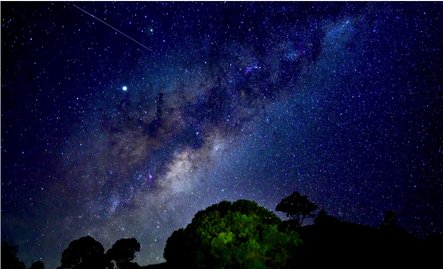Citizen scientists look to the sky to measure light pollution

University of Melbourne scientists are leading the call for Australians to step outside on the longest night of the year to help measure light pollution and break a world record for the number of people counting the stars.
Two thousand observers are needed to take part in the international #WorldRecordLight citizen science challenge, an online sustainability exercise established by the Globe At Night program.
Working with the Australasian Dark Sky Alliance, our scientists are urging Australians to support the initiative to better understand light pollution – the excessive and misdirected emission of artificial light – that has invaded our night skies, stopping us from seeing many of our stars.
Around the world there have been 11,000 observations to date, but University of Melbourne Associate Professor in Cultural Astronomy Duane Hamacher said there are still large global gaps, including Australia.
“The stars have always been at the core of the human experience, holding meaning about our significance and place in the Universe," Associate Professor Hamacher said. "Our inability to see most stars due to increasing light pollution is something this event can help us all to realise and better understand."
The Guinness World Records attempt begins 1pm (AEST) this Sunday, 21 June, the longest night of the year in the southern hemisphere and will last 24 hours. Participants are asked to take a short online lesson and then measure their night sky brightness, submitting their observations via computer or phone.
Researchers will use the data to create a map of light pollution across Australia, which will help us better understand the effects of light pollution on astronomy, people and animals.
Research shows that animals that live in our cities have disrupted sleep, increased stress and must change their behaviours to accommodate the loss of darkness. At the same time, astronomical observatories that depend on pristine, unpolluted skies are pushed further into the interior of the country.
Dr Jen Martin from the University’s School of BioSciences said we are only just beginning to understand the magnitude of light pollution.
“By measuring the light that reflects back up from the earth into space, we can create light pollution maps. But these maps can’t tell us what light pollution looks like from the ground,” Dr Martin said.
“By taking part in the count this Sunday, you can help us understand how light at night affects wildlife. For example, light pollution from cities distracts bogong moths as they migrate from Queensland to Victoria’s alpine regions. If they don’t arrive on time, the endangered mountain pygmy possums that depend on them for food will starve.”
Marnie Ogg, the founder of Australasian Dark Sky Alliance, said information from the world challenge would map how light pollution varies across the country and even help local authorities use their darker skies as an opportunity for tourism.
“Dark sky parks and tours are already popping up around the country.”